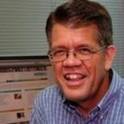This article summarizes the current status of newborn hearing screening in the United States, with particular note of issues related to data and patient information management. Much of the information comes from a survey conducted annually by the National Center for Hearing Assessment and Management (NCHAM) at Utah State University. The survey, which is designed to identify all universal newborn hearing screening (UNHS) programs in the United States, is done by asking state directors of speech and hearing programs, existing universal newborn hearing screening programs, and local chapters of the American Academy of Audiology and the American Speech-Language-Hearing Association to nominate programs they believe are screening at least 85% of the births or admissions in their hospital prior to discharge. We then contacted each nominated hospital by phone to confirm that it was a UNHS program and to gather some additional information.
This article, based on the results of that survey, briefly summarizes some of the realities, myths, and challenges related to universal newborn hearing screening (see White, Mauk, Culpepper, & Weirather, 1998, for a more complete description of the survey results).
